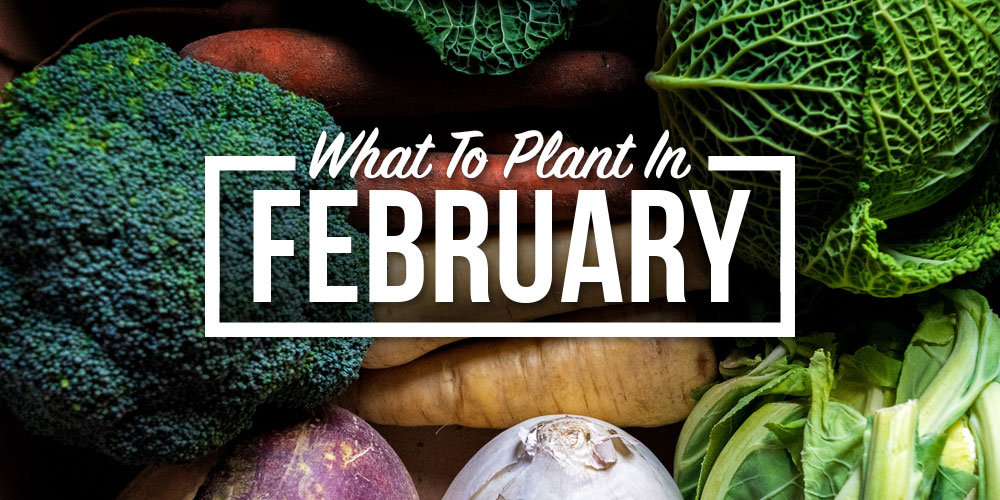
NAVIGATION
I have several types of gardens on my homestead that I’ve built up over the years. They range from a small patio garden to a 1/2 acre plot with chickens. To stay on top of it all, I’ve mastered garden planning, and before winter even starts, I have a solid plan for what vegetables to plant in February.
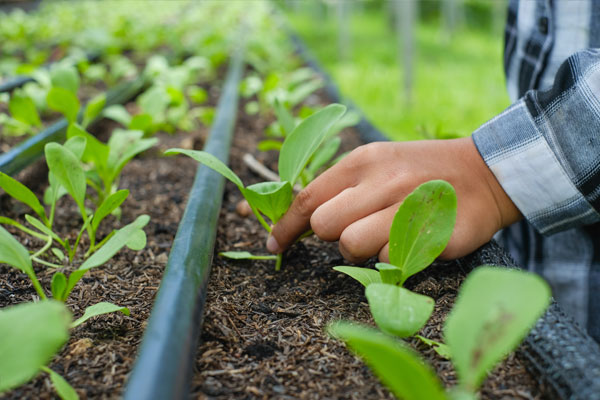

Hi, I’m Ryan
Most years, I like to start indoor seeds in February and plant vegetables in my garden as the weather allows. Gardening in February is the perfect opportunity to maximize your garden’s potential, and you might be surprised by the long list of what you can plant in the shortest month.

How Do I Stay Focused On What To Plant In February?

Lucky for us, there’s an abundant number of frost and cold-tolerant vegetables that are hearty enough to plant in February. Working with the chart below, you can pick any of the listed options, but you’ll likely decide which ones to plant in February depending on your tastes and what works best for your gardening style and climate.
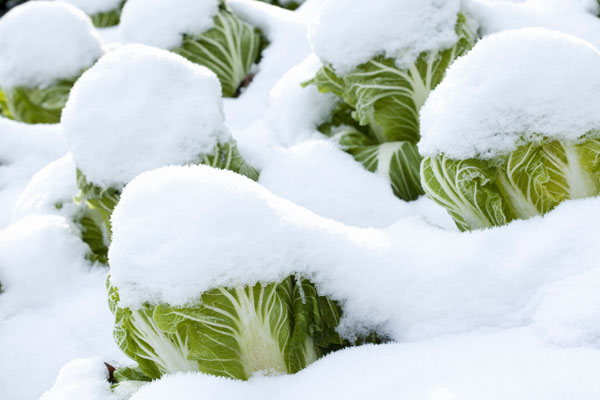
| Vegetables | Planting Date | How To Sow |
|---|---|---|
| Large Asian Greens | February 15-29 | Seedling |
| Asparagus | February 1-15 | Seedling |
| Artichoke | February 1-15 | Seedling |
| Broccoli | February 1-15 | Seedling |
| Brussels Sprouts | February 1-15 | Seedling |
| Cabbage | February 1-15 | Seedling |
| Cauliflower | February 1-15 | Seedling |
| Celery | February 1-15 | Seedling |
| Eggplant | February 1-15 | Seedling |
| Leeks | February 1-15 | Seedling |
| Lettuces | February 1-29 | Seedling and Direct Sow |
| Kale | February 1-29 | Seedling and Direct Sow |
| Parsley | February 1-29 | Seedling and Direct Sow |
| Peppers | February 15-29 | Seedling |
| Onions | February 1-29 | Seedling and Direct Sow |
| Spinach | February 1-29 | Seedling and Direct Sow |
| Tomatoes | February 15-29 | Seedling |
| Beets | February 15-29 | Direct Sow |
| Broad Beans (Fava Beans) | February 15-29 | Direct Sow |
| Carrots | February 15-29 | Direct Sow |
| Chard (Swiss & Rhubarb) | February 15-29 | Direct Sow |
| Hardy Greens | February 15-29 | Direct Sow |
| Potatoes | February 15-29 | Direct Sow |
| Radishes | February 15-29 | Direct Sow |
| Snap Peas | February 15-29 | Direct Sow |
| Turnips | February 15-29 | Direct Sow |

As you can see, the bottom third of the chart is full of options for direct sowing. There’s plenty of room for flexibility, too, as you can either directly sow lettuce, kale, parsley, onions, and spinach or choose to cultivate these as seeds to start in February. Don’t be afraid to try sowing seeds directly, though; it allows you to cut out a step and get your fresh produce to your table faster.
Prop an old window frame on cinder blocks and make a cold frame for lettuce, radishes, and onions. When the veggies are ready to eat, whip up a wilted lettuce salad.
What Seeds To Start In February: Let’s Start Sowing

February is the perfect time to start seeds. Where I live in the Carolinas, it doesn’t get that cold over the winter, but even if you live in a cooler area, you can sow seeds indoors for plants like tomatoes and peppers, which will give you a head start on the growing season.
What Seeds To Start In February
- Large Asian Greens
- Asparagus
- Artichoke
- Broccoli
- Brussels Sprouts
- Cabbage
- Cauliflower
- Celery
- Eggplant
- Leeks
- Lettuces
- Kale
- Parsley
- Peppers
- Onions
- Spinach
Like I mentioned before, I like to plan out my garden using a garden and seed planting calendar. To set my gardening goals, I write my seeding dates down on the calendar, and that helps me prepare and ensure healthy growing plants.
I like to use grow lights indoors, and for the most part, I use incandescent grow lights because they’re inexpensive, easy to use, and work great. Place two fixtures within 2 inches of seedlings for a 10 foot x 20 foot tray.
As a seasoned gardener, I try to always take into account factors such as seed maturity, recommended planting times, spacing, soil conditions, and weather patterns before transplanting my plants in February. This approach helps ensure I have optimal timing for transplantation and enables me to practice succession planting, where I can provide a continuous harvest throughout the growing season by planting different crops at different times.
What Materials Do I Need To Start Seeds Indoors In February?
To start seeds indoors, you’ll need some basic gardening supplies. First, I always try to recycle and upcycle any materials I have around the homestead for my gardening needs.
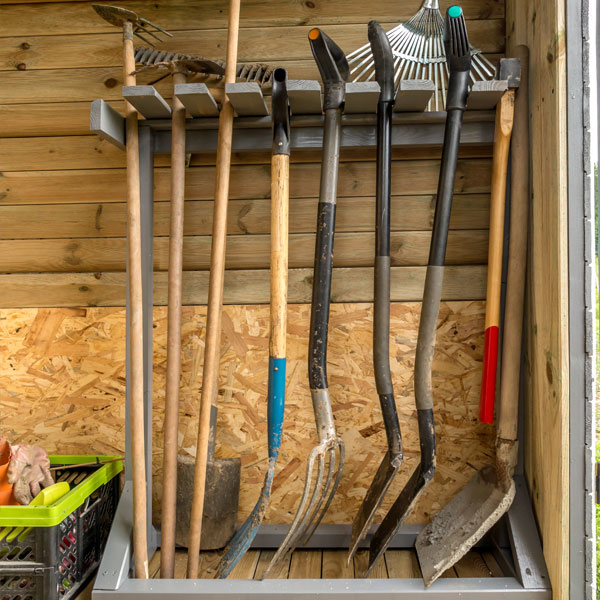 To prep, you’re going to need soil and containers for your seeds. You don’t need to buy anything special — you can repurpose egg cartons, toilet paper rolls, newspaper, or recycled vegetable/flower containers that you already have.
To prep, you’re going to need soil and containers for your seeds. You don’t need to buy anything special — you can repurpose egg cartons, toilet paper rolls, newspaper, or recycled vegetable/flower containers that you already have.
After you’ve planted the seeds, use plant tags or create your own labels so you know what you’re growing and how much of that crop you’ve planted in February. Then you’ll need to find a place to keep the seedlings as they grow. You can use any space, from a tabletop to a shelf, depending on how many seeds you’ve planted, but it’s a good idea to keep the seedlings away from drafty doors and windows.
Next, consider your light sources. Natural light is great, but you’ll have to turn the plants to prevent them from growing lopsided towards the sun.
If you have grow lights, they can provide both light and heat in a uniform way. In addition to watering, I like to use a simple spray bottle to mist the plants to keep them hydrated.
When seeding and planting bell peppers, I use eggshells from my chickens since the extra calcium helps prevent blossom-end rot.
Gardening In February: What You Need To Know Before You Grow

Like most homesteaders and gardeners, I enjoy working in the garden, growing my own food and getting my hands dirty all year long. To prep for year-round gardening, here’s a list of chores you should be doing in February:
- Complete orders for new seeds from catalogs and online resources. Once the seeds arrive, label the front side of each packet with the year. This will help you to quickly identify how old any unused seeds are in the future.
- If you’re starting seeds indoors, order inventory supplies like soil and containers if you need more than you already have on hand.
- Inspect your gardening equipment like your tiller and leaf blower to ensure they’re well-maintained and ready to be put to work once the season starts. It’s also a good idea to sharpen your garden tools and repair any handles or raised beds if you have them.
- Sow seeds that will be transplanted in March.
- Burn your beds for vegetables like asparagus, broccoli, and cauliflower and cover them to keep out weeds.
- Add clean ashes from your wood stove to your garden beds for added nutrients.
- Mulch your leaves and add them to garden beds to prepare your soil, which will help to hold moisture in the coming months.
- Turn your outdoor compost bins and feed them if needed to help them start heating up.
- Direct sow seeds once your garden is prepped and ready.
Plants To Start In February: How Is Frost Your Friend?
If you’re worried about which vegetables to plant in February, believe it or not, frost can be your friend. When it comes to winter crops, like broccoli, carrots and Brussel sprouts for example, a light frost causes the starches in the plants to convert into sugar, making these vegetables more flavorful, which is a bonus at the end of the day when we’re harvesting our gardening efforts. So, don’t let the fear of frost hold you back.
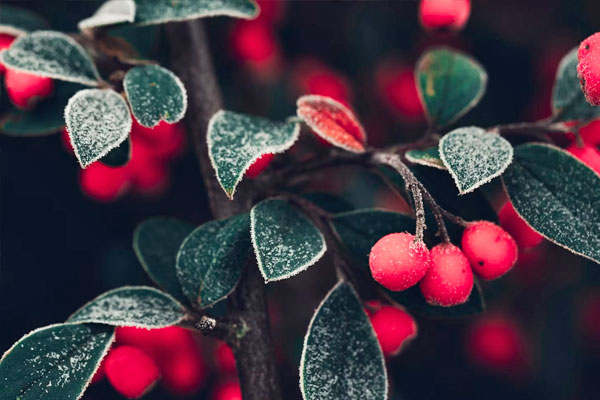 Too much frost, of course, can be a problem, but if you live in a climate that experiences light frosts, you’re golden.
Too much frost, of course, can be a problem, but if you live in a climate that experiences light frosts, you’re golden.
At the same time, it’s important to remember that weather can be unpredictable. But while we don’t control Mother Nature, we can be prepared and have a plan in place.
If you expect major frosts or live in an area where frost occurs more frequently and to varying degrees, you can use winter coverings to protect your plants, plant indoors, or build a mini greenhouse.
Whatever you do, just get started! Now that you know what vegetables to plant in February, you can start experimenting with growing all year long.
Your Turn!
- Do you grow and eat microgreens in February?
- Is planting vegetables in February part of your gardening plan?





Leave a Reply